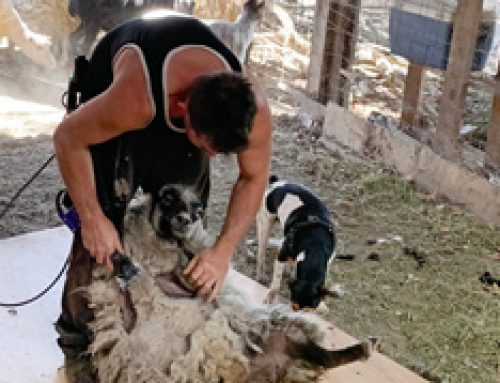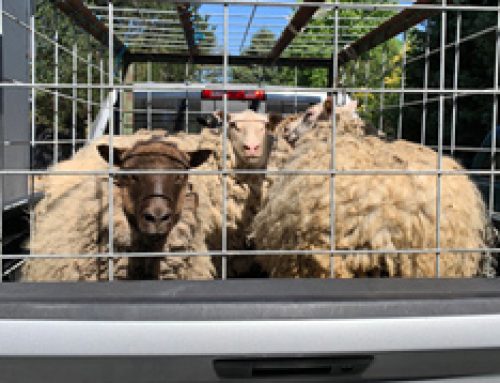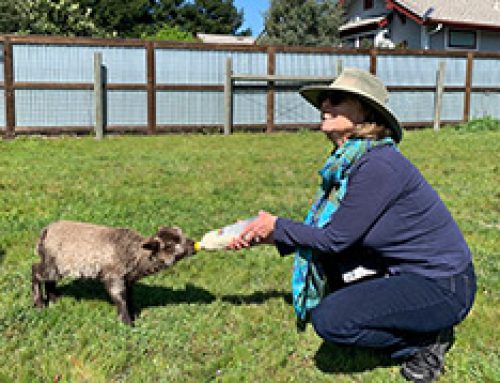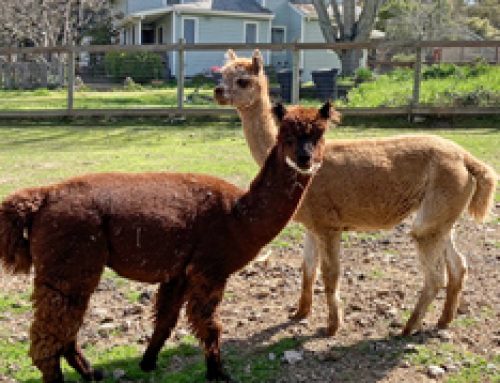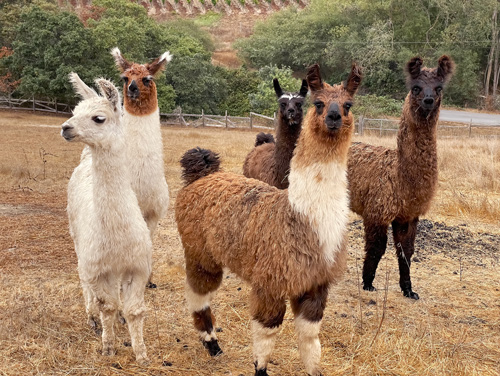
Join us as we foray into the world of llamas
Let’s start with some updates on our sheep. We have happy sheep! The sheep have been settling in marvelously at Mustang Court. They recognize the humans that visit and feed them, and greet us with a hearty Baaaaaa. The chickens chime in with their cluck-cluck-cluck, adding to the welcoming cacophony of the farm.
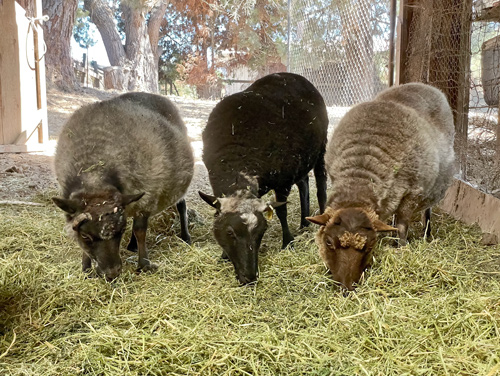
Happy sheep

Cluck-cluck-cluck
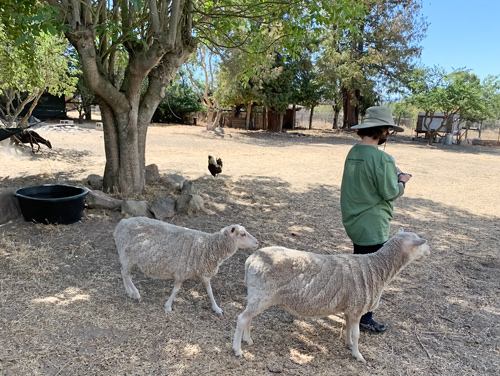
Sheep following Susan around
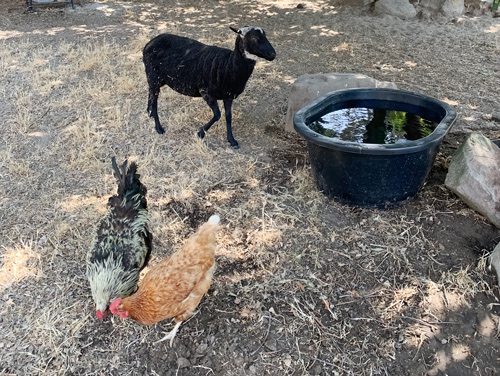
Sheep and chickens coexisting in harmony
As part of the strategy to acclimate the sheep to Mustang Court when they first arrived in June, we located them in a fenced in area in the backyard of the house. This location has been ideal because of its smaller and more contained size, which enabled the sheep to feel more grounded when they first moved to MCC, rather than letting them straight out into the big open field. Being at the backyard also meant they would get used to humans coming and going at the house, and there was easy access to water for their water trough. We have been feeding them alfalfa in the barn to get them used to their new home and shelter. Our kids have been hand feeding them mulberry leaves, which is like candy to sheep. It has been a great way to have the sheep and humans get to know each other.

Hanging out in the backyard

Eating alfalfa in the barn

Kids and sheep
The next step is to introduce the sheep to the big field, which is the location of Mustang Acres Farm, just adjacent to the main house and backyard. With the rain coming in the fall and winter, and the grass growing again, how awesome that we have sheep to manage the grass growth and fire fuel load. They have an entire grass buffet in the big field! In the past, we have hired people to mow the grass and Susan has also lent a hand in weed whacking. She will be out of a job this round, replaced by autonomous self-driving lawn mowers that do not talk back and complain or require gas!

Grass buffet for sheep in the big field

Susan will be out of a job weed whacking when the sheep take over
A consideration for putting the sheep out into the big field is their protection from predators. For the semi-rural location of MCC, coyotes are a concern. Enter the llama solution! Llamas make excellent “guard dogs” for sheep. When one llama is introduced to a flock of sheep, the llama will bond with the sheep and become king sheep. Llamas will instinctively protect its flock from predators by calling an alarm. The noise itself usually causes the coyote to backtrack and scamper off. The llama will then charge and kick the predator, if it didn’t have the good sense to retreat.
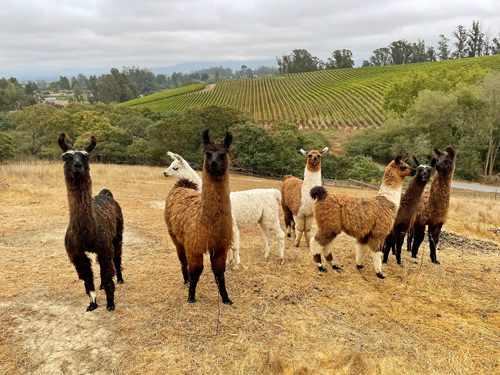
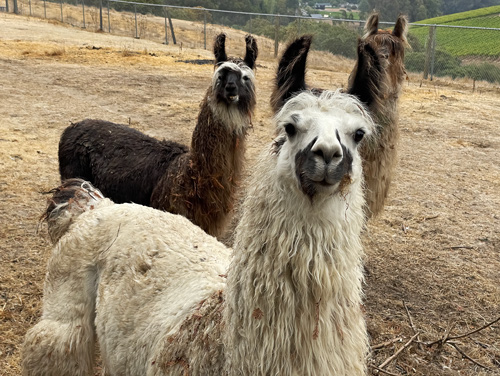
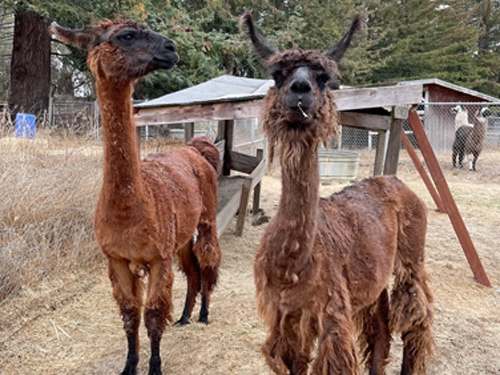
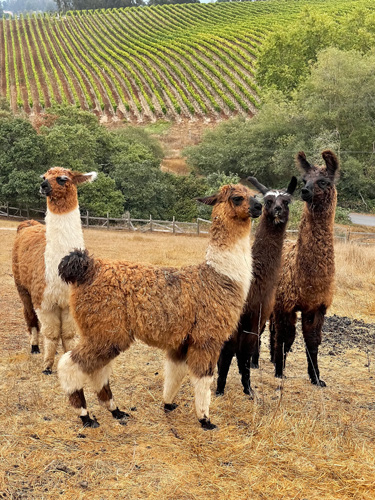
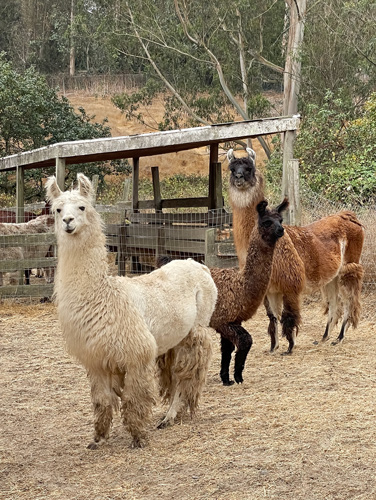
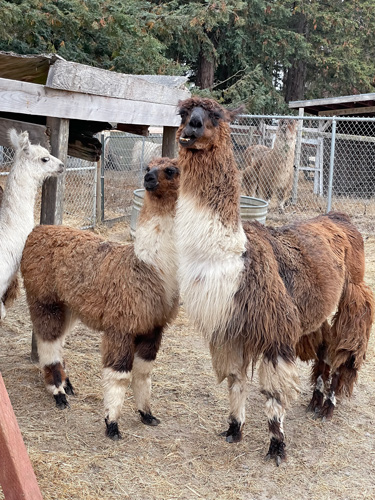
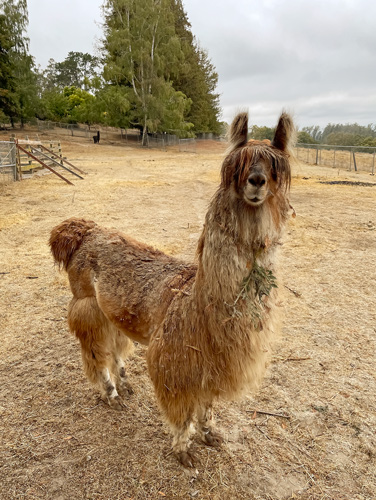
Through our shepherd Sarah of Wild Oat Hollow, we connected with Maria, the lovely owner of Skansen Kennel in Sebastopol, who welcomed us to her ranch to meet her llamas.
The most common question about llamas is, “Do they spit?”. The answer is yes, but they spit at each other as a way of expressing irritation or disciplining lower-ranked llamas in the herd. It is uncommon for them to spit at humans. Llamas are friendly, curious and have a zen-like presence. They will approach people calmly and easily, though they tend to keep a distance bubble until they are familiar with you.
Fun facts about llamas:
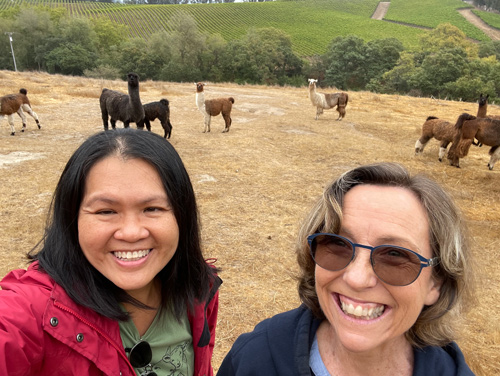
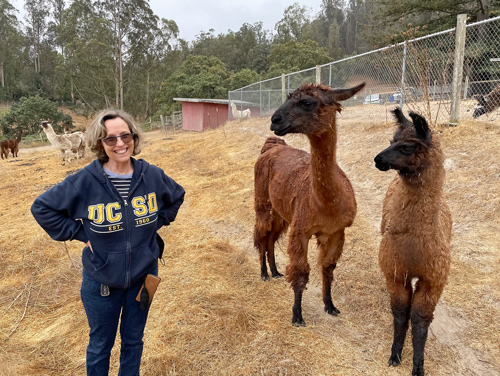
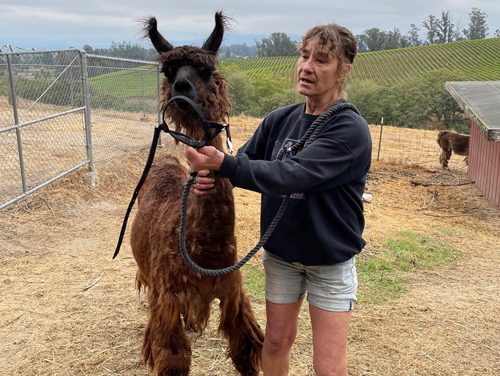
Maria demonstrating how to bridle a llama and walk her on leash
You might be wondering, but wait, llamas and alpacas look alike. How do you tell them apart? What is the difference between llamas and alpacas?
Llamas and alpacas are both part of the camelid family and are often mistaken as the same animal. A distinguishing feature is their size differences. Llamas are generally about twice the size of alpacas, and their hair and face shapes are also dissimilar. Llamas have longer faces with banana-sized ears that stand straight up. Alpacas have smaller, blunt faces with short, pointy ears. Another key difference is their hair. Llamas’ hair is coarser while alpacas have softer, fluffier hair.
Having made this connection, we hope to have a llama join our flock of sheep soon and crown it king sheep. Check in again soon for our next blog and see what we are up to next!

